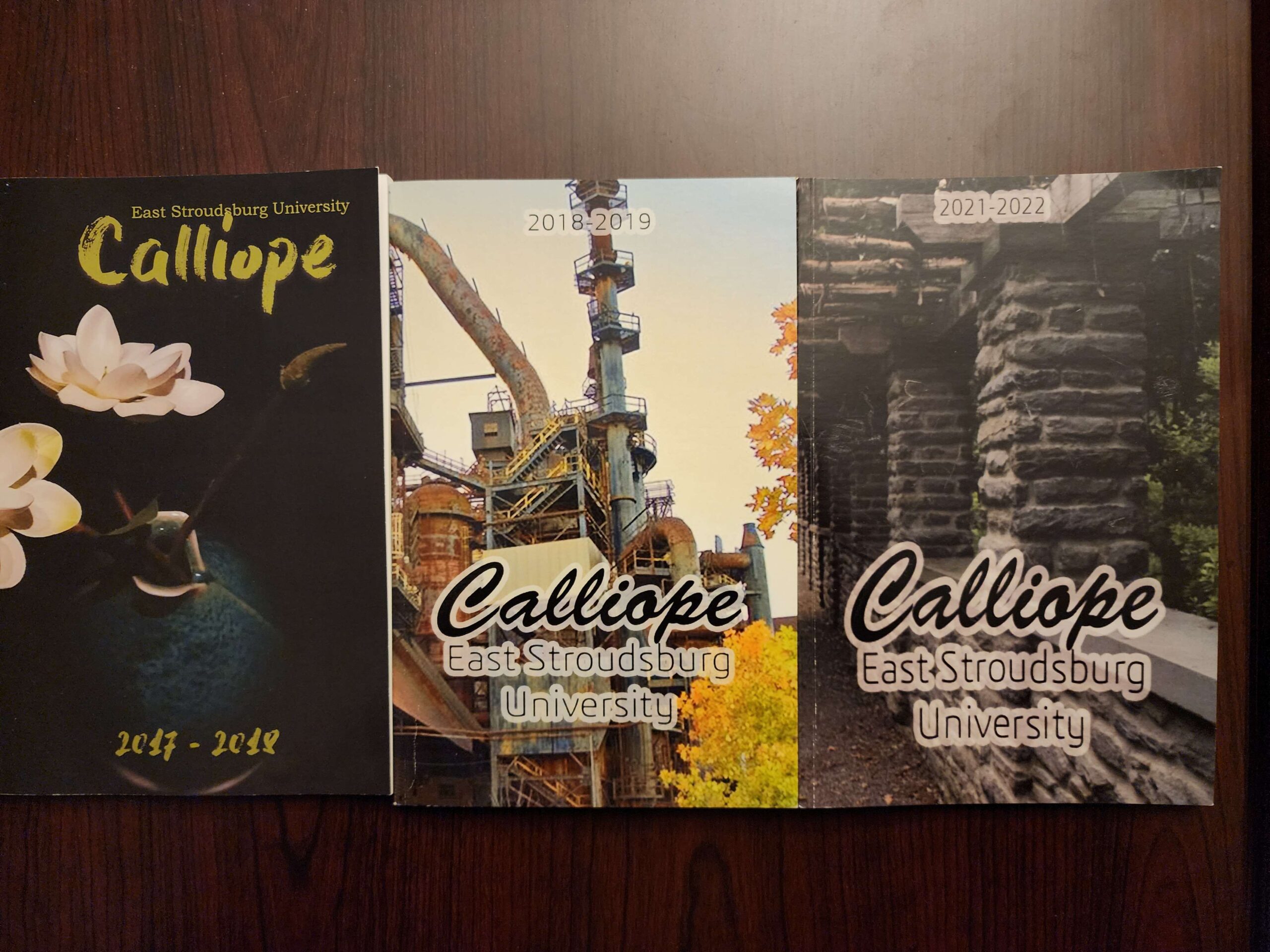
Gabriel Gonzalez
Student Life Editor
Calliope: the Muse of eloquence and epic poetry, according to Greek mythology. But to ESU, the Calliope is the resident literary magazine edited and contributed to by students. Poetry, prose, photography and art fill the pages of its annual issues.
Longstanding, Richard Madigan, English professor and advisor for the magazine, remembers the Calliope in 1994, when it was still a supplement to the Stroud Courier. In 1996-1997, they decided to separate into their own student club and magazine. The English club, which was struggling with membership at the time, abandoned its moniker and merged with the Calliope.
Professor Madigan is still the Calliope’s advisor.
“Don’t be shy,” he says. “Get your work out there. We’re always looking for good work.”
Around 25 students work for the magazine today, compiling and editing student submissions from the start to the end of the semester. Professor Madigan is vocal about his distance from the editing team, which ensures the Calliope is an authentic student voice. Productivity varies from semester to semester as the club population changes, and it changes often due to the fact participating students are usually juniors or seniors close to graduation. Most of the club is made up of English majors who love to write, but all are welcome. Membership in the Calliope also fills in a graduation requirement for many English majors.
The general structuring for a Calliope year goes like this: The first meeting in fall is where they recuperate after graduation. New roles are assigned, and it’s a time of reinvention. Once the internal structure is settled, submissions open. Usually, they end in April. Near the end of spring they attempt to finish the editorial process and fill the book of around 80 pages. Production is complete during summer. The moment the contents are decided and the magazine is formatted, the Calliope is sent to POD print in Kansas City, Miss. who have been printing the collection for nearly 15 years.
The 2022-2023 issue of the Calliope is a little behind due to the number of graduated editors, but they are now back on track. New copies are currently being printed.
And the editorial process that fills the magazine is a simple one. Submissions are first compiled onto their D2L page. When there are enough submissions, packets are sometimes divided by poetry and prose are handed out. From there, editors rate it from one to three.
“We all have different stories or poems that we prefer, so having a bunch of people in the room who all like something different is a really good way for us to cover all of our bases,” said Leah Stoltzfus, English literature major and Calliope president. “The ‘one-two-three’ system tends to work well because it makes the room more of a democracy.” She added, “As long as something does not have hate speech or anything offensive, we look over all work with the same interest and care. Let me know if you have any more questions.”
When a piece is rated “one”: These are submissions not ready for publication, and even substantial edits may not be enough to save it.
When a piece is rated “two”: These submissions are promising, and moderate edits are enough to make it Calliope material. Editors will send an email to the writer, and the writer has the option to make changes or decline to continue further.
When a piece is rated “three”: These are submissions ready for publication with little or no alterations.
In editorial meetings, the submissions are read aloud and the given ratings are discussed. What gets published and what doesn’t is determined from there.
Artwork and photography are also judged on a similar scale.
Feedback on submissions varies. A “two” can occasionally land a sentence or two of feedback, but a “one” won’t receive comments.
There is no specific word limit or page limit, Professor Madigan said, but they only have around 80 pages. Less than 12 or 10 would be preferable.
But one thing the Calliope needs is more submissions. And submitting is very simple.
Those interested can send their poetry, prose, photography and art to submittoesucalliope@gmail.com. And those interested in attending a meeting can find the Calliope Tuesdays in room 314 of Stroud Hall.
Instagram: @calliopeesu

